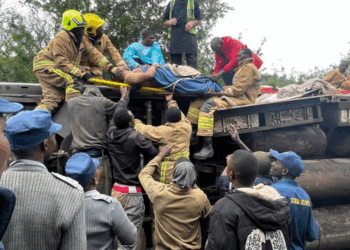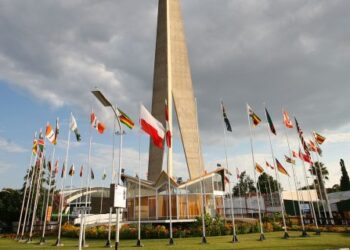THE Zimbabwe National Water Authority (Zinwa) says the construction of the Gwayi-Shangani Dam in Matabeleland North Province is now 70.2% complete and efforts are being made to supply Bulawayo with water from the dam soon. Bulawayo is facing another round of water shortages that have seen residents going for over a week without the precious liquid.
The ambitious project to draw water from the mighty Zambezi River, over 400 kilometres away, is seen as a long lasting solution to Bulawayo’s water woes. It was first mooted in 1912, and over 100 years later now, the project is yet to be completed.
In January, Agriculture, Water and Rural Development minister Anxious Masuka had said the gigantic Lake Gwayi-Shangani will be completed ahead of the 2023/24 summer cropping season. Responding to questions on the state of water supply dams for Bulawayo and the Gwayi- Shangani Dam, Zinwa spokesperson, Marjorie Munyonga, said the project was now 70.2% complete.
“In the meantime, efforts are directed at the construction of the Gwayi-Shangani Dam and the Gwayi-Shangani to Bulawayo pipeline, which are the critical components of the Matabeleland Zambezi Water Project, that has for long been touted as the long term solution to Bulawayo’s water challenges,” Munyonga said.
“Once the project is complete, the city will get water. The project is now 70. 2% complete.”
The dam is being constructed by Zinwa in partnership with a Chinese contractor. Bulawayo currently gets its water supplies from six dams located in Matabeleland South; Insiza Mayfair, Umzingwane, Mtshabezi, Inyankuni, Lower Ncema and Upper Ncema dams.
Munyonga, however, said the dams have been part of the solution to the water challenges being experienced in Bulawayo with the construction of Mtshabezi Pipeline coming in as a medium term solution.
“The Nyamandlovu system is also currently augmenting the water supplies from the dams while the long term solution, which the Matabeleland Zambezi Water Project is being actively and rigorously pursued,” she said.
Munyonga said as of September 20, water levels at Umzingwane Dam were at 8.2%, Mtshabezi Dam 77%, Upper Ncema 24.4%, Inyankuni 31.8%, Lower Ncema 34.8%, and Insiza was at 64%. Meanwhile, Bulawayo residents complained that water shortages have worsened in the post-election period. Bulawayo Progressive Residents Association chairperson, Ambrose Sibindi, said the water crisis may trigger water borne diseases outbreak.
“We are aware that we are on a 72 hour water shedding period but unfortunately in some parts of the suburbs like Pumula South, Pumula East and Nkulumane water goe for more than 72 hours without water,” Sibindi said.
“The residents are really concerned about this.”
Bulawayo town clerk Christopher Dube recently said council supplies water using bowsers to stabilise the situation and prevent outbreaks of waterborne diseases.
Source Southern Eye











